Riots – what provokes them?
Image source: BBC
By RN Bhaskar with inputs from Sakeena Bari Sayyed
Nepal is on the boil. The prime minister and president have been compelled to demit their respective offices. The crowds continued to go on a rampage. They even burnt part of the Parliament building. The army has stepped in. It has appointed a former judge as the interim president. But the riots threaten to continue.
What caused this riot? Normally, riots take place when earlier warning signs are ignored. Nepal had many. But its rulers – actually the politicians – ignored them. They preferred to wallow in their lavish perks and their jaundiced view of all that was happening around them. It is only when the riots erupted that they began to ask – why did it happen.
Other riots
But Nepal was not the only one which witnessed a riot. Neighbour Bangladesh too saw a riot, which led to the fleeing of the prime minister. A new prime minister, imported from the US, was installed as the new head of state. He was a Bangladeshi citizen, who was in self-imposed exile in the US. Many believe that he is a US puppet, and that it was the US which helped inflame the mobs which went on to a riot. Once again, the prime minister’s residence too was ransacked.
This is what happened in Sri Lanka as well, where the head of state had to abdicate, and a new head of state was installed.
All the three countries, discussed above, were, and continue to be, democracies. Democracies are meant to allow some of the pent-up steam to escape. Riots are conventionally believed to be more likely in dictatorial empires where there is no safety valve. So, what went wrong with these three democracies?
Riots were also witnessed in Iran when the Islamic Republic was born. Thereafter, the government, along with the Revolutionary Guards, actually worked hard to ensure that there would be no riots (https://asiaconverge.com/2015/11/housing-lessons-from-iran/). But more on this later.
Malaysia too witnessed riots, especially when there was a political clash between Mahathir Mohamad, the former prime minister of that country, and Anwar Ibrahim, the current prime minister. Pakistan has witnessed a series of riots. So has India. But in Pakistan the riots destabilised governments, partly because the military too played a political role. India has survived riots by a whisker. Indonesia too has witnessed major riots, and one very recently. So has Myanmar.
In almost all such cases, the basic charge remains corruption, though the immediate provocation might be something else.
Corruption is a cancer, which spreads very easily, and can eat into the very vitals of a country. Each new government that is ushered into power talks about rooting out corruption. But then some governments allow it to become worse, till a point is reached when people become restless and even angry.
This is what appears to be happening in India as well. As the data suggests, corruption has increased in India. But so far, there has been no major uprising on account of this problem. However, when combined with poverty and unemployment the situation can become volatile. Add to this the collapse of literacy (India’s definition of literacy masks the real rot), and you provoke a population into fury. Education gives people a chance to improve their miserable current fate. The absence of good education renders them unemployable and hence desperate.
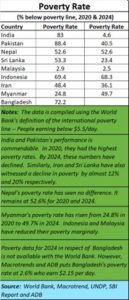 Literacy, employment and poverty alleviation
Literacy, employment and poverty alleviation
That is why, literacy, poverty and unemployment are key factors to pay heed to. When people are poor, and many of them are young and illiterate, they find themselves trapped. That is what happened in Iran when Mohammad Reza Pahlavi (the Shah of Iran) was compelled to flee the country (he died in exile). Iran enjoyed a demographic dividend then. But it was poor and not well educated. There was rampant unemployment. Corruption was commonplace. The trigger came when the Shah capitulated and let the US ride rough shod over the country. Humiliation led to rage exacerbated by poverty, a bleak future and unemployment.
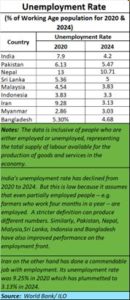 When the Islamic Revolution brought Khomeini to power, he was painfully aware that the public was still sore with unemployment and poverty. He had to create jobs quickly. That is when he conceived of a scheme (later called Meherbani) which gave each child the promise of a future by giving him or her a savings account with decent cash in it, to be redeemed after the child became 18. That could allow a young couple to buy a house or start a business. The money was given to every child, not to fragmented sections of the population (a lesson India hasn’t learnt yet). The government got houses to be built in the millions which would be financed by the state (cement, labour and steel were domestically produced and needed no foreign exchange). Construction provided jobs. Add to this the meherbani promise. That gave each young person the ability to pay for a house in 18 years. The schemes promoted aspirations. The state focussed then on good education give people the assurance that tomorrow would be brighter. That staved off another riot. Corruption was controlled as well. Recent news reports about corruption rearing its head gave Israel the hope that the government could be toppled (https://www.aljazeera.com/opinions/2025/6/24/how-israel-failed-in-iran). But the meherbani, education and jobs ensured that the state survived and remained united.
When the Islamic Revolution brought Khomeini to power, he was painfully aware that the public was still sore with unemployment and poverty. He had to create jobs quickly. That is when he conceived of a scheme (later called Meherbani) which gave each child the promise of a future by giving him or her a savings account with decent cash in it, to be redeemed after the child became 18. That could allow a young couple to buy a house or start a business. The money was given to every child, not to fragmented sections of the population (a lesson India hasn’t learnt yet). The government got houses to be built in the millions which would be financed by the state (cement, labour and steel were domestically produced and needed no foreign exchange). Construction provided jobs. Add to this the meherbani promise. That gave each young person the ability to pay for a house in 18 years. The schemes promoted aspirations. The state focussed then on good education give people the assurance that tomorrow would be brighter. That staved off another riot. Corruption was controlled as well. Recent news reports about corruption rearing its head gave Israel the hope that the government could be toppled (https://www.aljazeera.com/opinions/2025/6/24/how-israel-failed-in-iran). But the meherbani, education and jobs ensured that the state survived and remained united.
It was through such schemes that Iran could stave off the possibility of more riots despite crippling US sanctions. Not surprisingly, Iran (despite US sanctions) has grown faster than India and many of its Central Asian peers.
This is something that Myanmar could not do. India’s track record on the literacy and employment fronts is terrible. The combination of these factors can easily result in a riot – especially from a population seething with rage over communal discord. The fact that much of the discontent is in border states (https://indianexpress.com/article/opinion/editorials/delhi-riots-fabrication-evidence-witness-delhi-police-justice-10256177/) makes insurrection easier, as the rioters can easily flee into the jungles across the borders, and indulge in guerilla warfare.
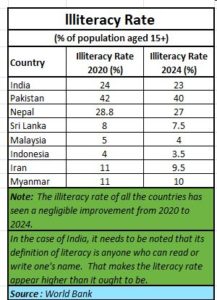 That is why governments need to be very careful if they have not provided their citizens good education, a bright future, good jobs and a corruption free environment. To be fair, one area where the Indian government has actually rooted out much of the corruption is in the income tax department. But that is not enough. A lot more needs to be done. Corruption is increasing.
That is why governments need to be very careful if they have not provided their citizens good education, a bright future, good jobs and a corruption free environment. To be fair, one area where the Indian government has actually rooted out much of the corruption is in the income tax department. But that is not enough. A lot more needs to be done. Corruption is increasing.
In Nepal the immediate provocation was the shutting down of social media. That led to the bottling up of rage, which led to an explosive outburst. Nepal too had a young population, but with few jobs (most of the youth travel to India to get jobs in this country). Its people have little good education as well. But when social media was blocked, it took away freedom of expression.
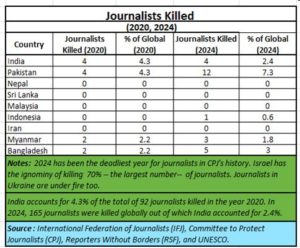 Some governments curb this right to free expression even by engineering the murder of journalists and through the banning of free speech (https://rsf.org/en/country/india).
Some governments curb this right to free expression even by engineering the murder of journalists and through the banning of free speech (https://rsf.org/en/country/india).
The blocking of social media and internet has a similar effect of clamping down on free speech.
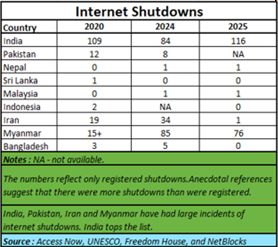 That was the last proverbial straw that broke the back of restraint in Nepal. The riot became even more pronounced when social media was banned.
That was the last proverbial straw that broke the back of restraint in Nepal. The riot became even more pronounced when social media was banned.
As stated above. No one cause results in a riot. It is insult heaped over injury that prepares the dry powder. Once that is done, it only needs a spark to cause an explosion.
The ogre of communalism
India needs to be careful. It has long taken inspiration from countries like Israel to promote its ill-conceived anti-Islamic policies. Listen to the rants in the North East at present (https://thewire.in/rights/ahead-of-2026-polls-assam-bjp-posts-islamophobic-video). Such rants could provide the spark that can engulf a border state in flames. It is already reeling under oppression (https://progressive.international/wire/2025-02-21-how-state-repression-and-deliberate-ethnic-polarisation-made-manipur-boil-over/en). The state’s proximity to the Rohingyas in North Myanmar should be another cause for advocating utmost restraint and care. Unemployment and poverty add grist to the fire.
The disintegration of Israel points to how communalism eventually leads to national collapse (Listen to the analysis of Alistair Crooke, former British ambassador and a specialist on developments in the Middle East at https://www.youtube.com/watch?v=2I99nIORpw0).
Or listen to John Mearsheimer at his talk in Australia on 17 May 2024 at timeline 1:27:34 at https://www.youtube.com/watch?v=kAfIYtpcBxo. He explains how over 500,000 Israelis had already left Israel. More are believed to be keen on leaving, but the Israeli government has sealed its borders. Today, its visceral hatred of the Palestinians has almost wrecked its entire economy (https://www.timesofisrael.com/war-costs-put-israels-public-services-at-risk-of-collapse-says-former-central-bank-head/).
India too has been witness to the false narratives that are periodically spun out. The Tablighi case (https://indianexpress.com/article/india/saad-audio-clip-doctored-after-police-express-reporter-6403831/) is a good example. So are the recent pronouncements of the courts in the Malegaon blasts case (https://economictimes.indiatimes.com/news/india/five-judges-two-agencies-and-a-17-year-wait-the-long-road-to-verdict-in-malegaon-blast-case/articleshow/123015763.cms?from=mdr), Ditto for the Delhi riots (https://indianexpress.com/article/opinion/editorials/delhi-riots-fabrication-evidence-witness-delhi-police-justice-10256177/). All of them have brought little credibility to the investigation agencies and the police. When credibility goes, false narratives turn on the promoters of such stories. Israel is beginning to witness the consequences of this hapless policy.
Conclusion
Fortunately, Indians are less likely to get violent and begin nationwide riots. But even a localised riot, especially in a border state, is enough to cripple an entire country.
India needs to create jobs urgently. Its education must be upgraded to international levels (it has refused to participate in the PISA evaluation process since 2009). And it must try not to polarise kits population or clamp down on media.
Most of all, it needs to give its surging young population a future plan that they can look up to. Propping up speculation in the stock markets is not the way to do this. It must encourage investments which in turn can create jobs.
But all this will require serious intent. If that happens a lot can be achieved. One hopes the government wakes up from its complacence and begins to set right some of the wrongs.
===============
Do view my latest podcast – a conversation with Abizer Diwanji on the implications of the Jane Street episode in India. You can view it at https://youtu.be/vTOSAx9dY8o
———————–
And do watch our daily “News Behind the News” podcasts, streamed ‘live’ every morning, Monday through Friday, at 8:15 am IST. The latest can be found at https://www.youtube.com/live/fs1a9xmvK30?si=hxtlWqTu4e8K9FLX
============



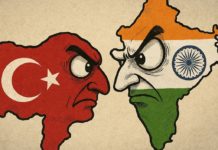








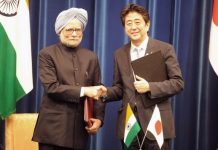













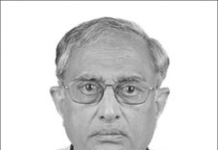


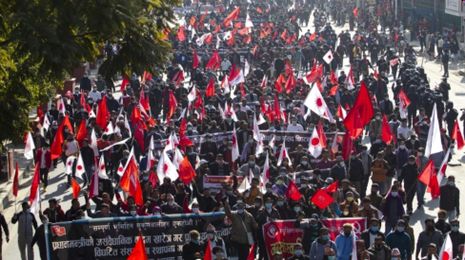
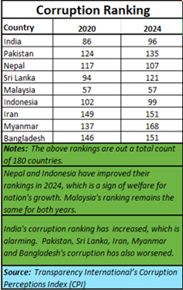
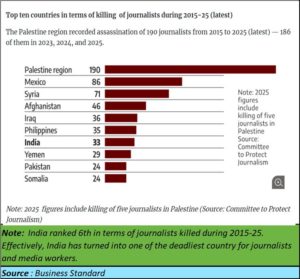






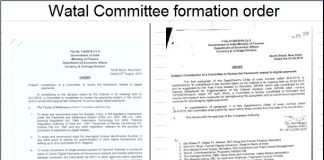
COMMENTS